19 November 2020, “In the past year there are some really great examples of conversions of old buildings into tasteful apartments – such as on the South Terrace, George’s Quay, and Langford Row. There is a very real need for accommodation within the city centre,” Cllr Kieran McCarthy said. Proposal for mixed-use development at iconic Cork building could ‘breathe new life into the area”. https://www.echolive.ie/corknews/Proposal-for-mixed-use-development-at-iconic-Cork-building-could-breathe-new-life-into-the-area-32d526d8-e01f-42dd-8056-51ba388d876a-ds?fbclid=IwAR1CNyW5uVLTIZx6buYXfZwKRTXp3QoE3YLrA43LvmglcPWNLzGMQbLdA2o
Kieran’s Our City, Our Town, 19 November 2020
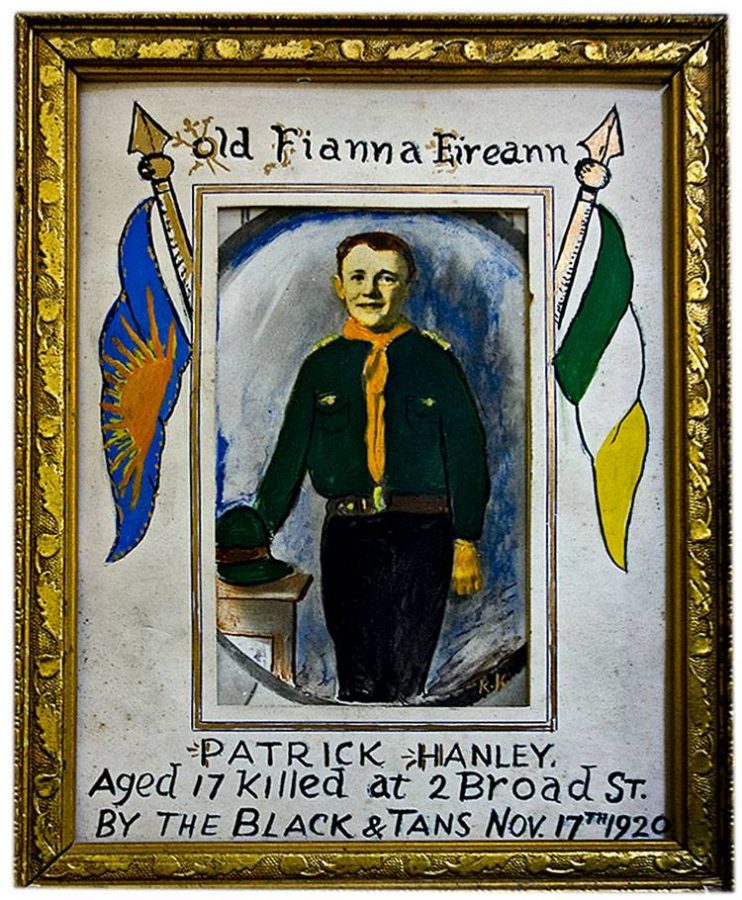
1075a. Portrait of Patrick Hanley 1920 (source: Cork City Library).
Kieran’s Our City, Our Town Article,
Cork Independent, 19 November 2020
Remembering 1920: The Murder of Patrick Hanley
This week coincides with the centenary of teenager Patrick Hanley, who was shot by crown forces on 17 November 1920. George Hurley was a comrade of Patrick within Fianna Éireann or the youth division of Cork IRA Brigade No.1. He recalls the lead-up and incident in his witness statement to the Bureau of Military History (WS1630).
In 1919, the Fianna Éireann headquarters was moved to a private house on Cork’s Pope’s Quay, and, in 1920, to a house on North Main Street. This latter place served as headquarters up to the Truce of July 1921. The training programme of the Fianna consisted of drilling, signalling instruction and lectures in first-aid and in the use of the revolver and rifle. A rifle was used for instruction purposes. Frequent parades took place and on occasions the boys marched out into the country where field training was carried on. A distinctive uniform was worn consisting of a blue short pants, a green shirt with a saffron scarf, and a green broad-brimmed hat.
The use of revolvers was discouraged by the senior organisation of the IRA in the city. A direction was given to the Fianna by headquarters in Cork that the Fianna Éireann was not to carry out any attacks on enemy forces by shooting, unless with the prior permission of the IRA.
The youth division pasted up posters concerning meetings, concerts and public parades. They helped in taking up collections of money for national purposes prisoners’ aid. funds, Sinn Féin election funds and such like. Enemy posters proclamations were torn down.
As time went on and the struggle became more intense in 1920, so also did Fianna Éireann activities increase. They carried out scouting duty and dispatches for the IRA and helped in the removal from suspected places of IRA ammunition and guns. They carried out daylight raids on shops and vans containing provisions and various other goods being dispatched to military barracks in Cork. On several occasions, they held up individual soldiers or Black and Tans and took their equipment.
The murder of Paddy Hanley was by way of a reprisal by the British for the shooting of an RIC sergeant named O’Donoghue by G Company of the IRA earlier on the same night of 17 November 1920 in the course of an IRA raid on Lunham’s bacon factory.
Patrick lived with his widowed mother at No. 2 Broad Street. He was the sole support of her and his sister. At about 11.45 p.m. on the night of 17 November 1920, the residents of No. 2 Broad Street were awakened by the noise of the front door being broken open; a man rushed up the stairs and entered the bedroom of Mr and Mrs Coleman who also resided in the house. The man was wearing a policeman’s uniform, cap and goggles. He came to the bedside with a revolver in one hand and a flash lamp in the other.
When asked by Mrs Coleman what brought him there, he merely exclaimed “Hello”, flashed his lamp on the bed, raised his revolver and fired point-blank into the bed. The bullet wounded Mr Coleman in the arm. The assailant then turned and walked out of the room leaving Mrs Coleman screaming.
Paddy Hanley opened the door of his room when he heard the man rushing up the stairs. The man in police uniform had just come from Mrs Coleman’s room. Whilst standing at the door of his bedroom door, Patrick was fired at. It missed him. The man fired a second time and the bullet struck Patrick above the heart, killing him instantly. He was in his night attire at the time.An ex-British army soldier who lived in Broad Lane was also shot dead.
Leo Buckley, Intelligence Officer with Cork Brigade No.1, was a witness of the shooting (WS1714, Bureau of Military History). At the time, he was sleeping in a top back room of an apartment house in Sheares Street. He recalls that some hours prior to Patrick’s death, an RIC Sergeant had been shot by Tommy Healy and Willie Joe O’Brien of G Company. Tommy and Willie were hiding on Sheares Street. Leo denotes in his witness statement that he felt that Patrick had been shot in mistake for Tommy Healy, while the shooting of O’Brien’s brother-in-law the ex-British army soldier was also a mistake.
In another reprisal raid the same night by the RIC in the Grattan Street, another Fianna boy O’Brien was shot in the mouth. He subsequently recovered from the wound. Volunteer Eugene O’Connell was also killed on the same evening as a reprisal for his part in the murder of the RIC Sergeant. An IRA man suspected of giving information as to who shot the RIC Sergeant was later apprehended and executed by the IRA.
Patrick Hanley’s remains were laid out in his Fianna Éireann uniform in the mortuary of the Mercy Hospital and later removed to the church of SS Peter & Paul. He was buried in St Finbarr’s Cemetery, the tricolour-draped coffin being shouldered all the way to the cemetery by the dead boy’s comrades.
At the Republican Plot there are two memorials to his memory – an individual cross and a marble stone to Fianna Éireann. In addition, on 17 November 1957, a plaque was unveiled by Lord Mayor Jago in memory of Patrick Hanley on Patrick Hanley Buildings on Grattan Street. Eugene O’Callaghan’s headstone can also be viewed in the Republican Plot.
Kieran’s latest book Witness to Murder, The Inquest of Tomás MacCurtain is now available to purchase online (co-authored with John O’Mahony 2020, Irish Examiner/www.examiner.ie).
Captions:
1075a. Portrait of Patrick Hanley 1920 (source: Cork City Library).
1075b. Gravestone of Patrick Hanley in the Republican Plot in St Finbarr’s Cemetery, present day (picture: Kieran McCarthy).
1075c. Remembrance plaque to Patrick Hanley on Grattan Street, Cork, erected in 1957 (picture: Kieran McCarthy).
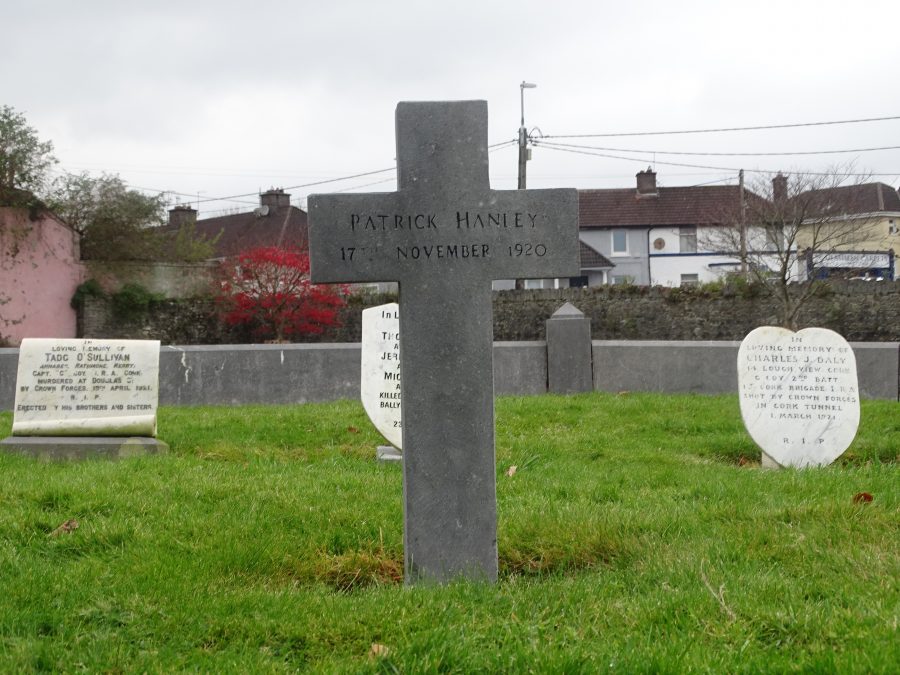
1075b. Gravestone of Patrick Hanley in the Republican Plot in St Finbarr’s Cemetery, present day (picture: Kieran McCarthy).

1075c. Remembrance plaque to Patrick Hanley on Grattan Street, Cork, erected in 1957 (picture: Kieran McCarthy).
Cllr McCarthy: Marina Park Progressing, 17 November 2020
Press Release:
Independent Cllr Kieran McCarthy has welcomed progress on Marina Park. In response to Cllr McCarthy’s question on the floor of the most recent City Council meeting to the Chief Executive, he was informed that Phase 1 of the contract commenced in early March 2020 with a scheduled completion date of May 2021. Works were suspended on 30 March due to the COVID – 19 lock-down in accordance with Government guidelines. Works resumed on site on 18 May following the lifting of restrictions for construction works. The contractor is making great progress on the works and is confident of achieving the scheduled completion date of May 2021.
Phase One, which covers the area from the Marquee Link Road (linking Monahan and Centre Park roads) to Páirc Uí Chaoimh, also incorporates new pathways, the installation of sunken lawn areas as well as the diversion of a watercourse.
The current works comprise the creation of a new public car park at the Shandon Boat Club end of the Marina, as well as a new cycle lane and pedestrian walkway (all completed), and the installation of a prominent red steel pavilion on the site of, and reproducing, the essence of the central hall of the former Munster Showgrounds.
Liam Casey, senior parks and landscape officer with the Council has noted in recent weeks that this structure will be roofed, but the sides will not be enclosed, and there will be opportunities for coffee pods and outdoor seating and arts and crafts.
Cllr McCarthy noted: “there is local excitement about the Marina Park development. It is now over seven years since the Part 8 document came before the City Council. The park was held up in the early days due to a lack of funding but has since received funded from an Urban EU funding pot. This is enough finances to develop phase one of the park, which is basically the foundations and greening of the former brownfields site of the former showgrounds”.
However, Cork City Council anticipates that it will go to tender later in November for the second phase of its bold Marina Park project which will ultimately see the formation of a contemporary city park, about five times the size of the famous FitzGerald’s Park. Phase 2, which concentrates on development to the east of Páirc Uí Chaoimh, takes in the Atlantic Pond and continues down as far as Blackrock Village.
“Last Leaves Standing”, Japanese Gardens, Ballinlough, Cork, 16 November 2020
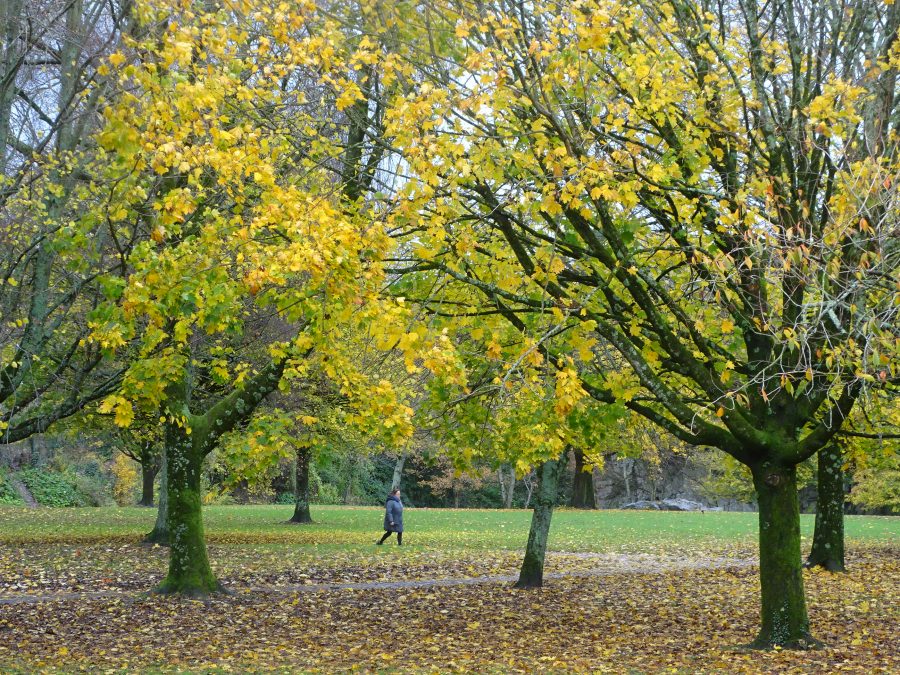
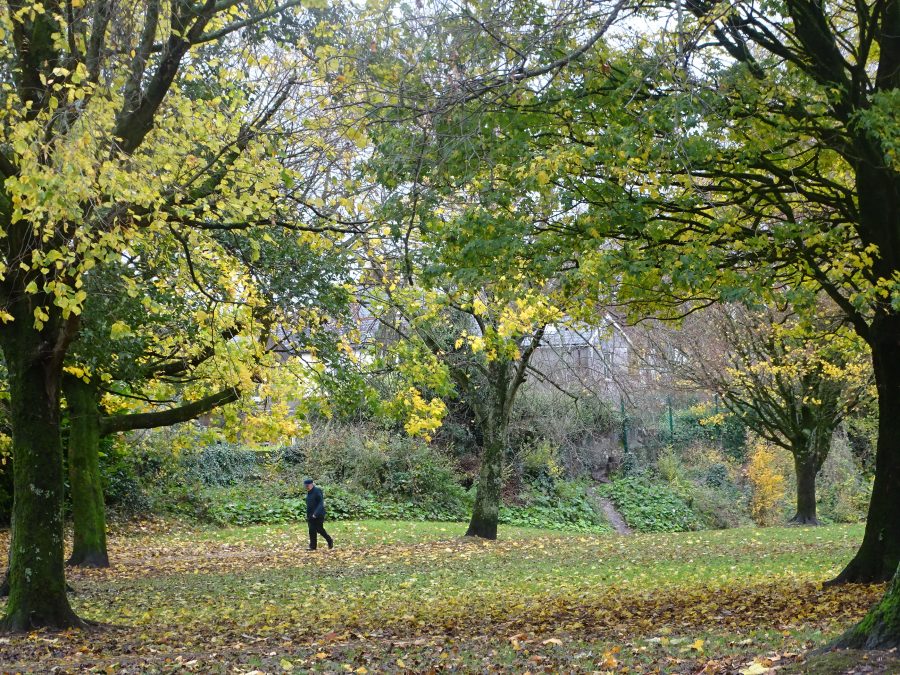
Japanese Gardens, Ballinlough, Cork, 16 November 2020 (picture: Cllr Kieran McCarthy)
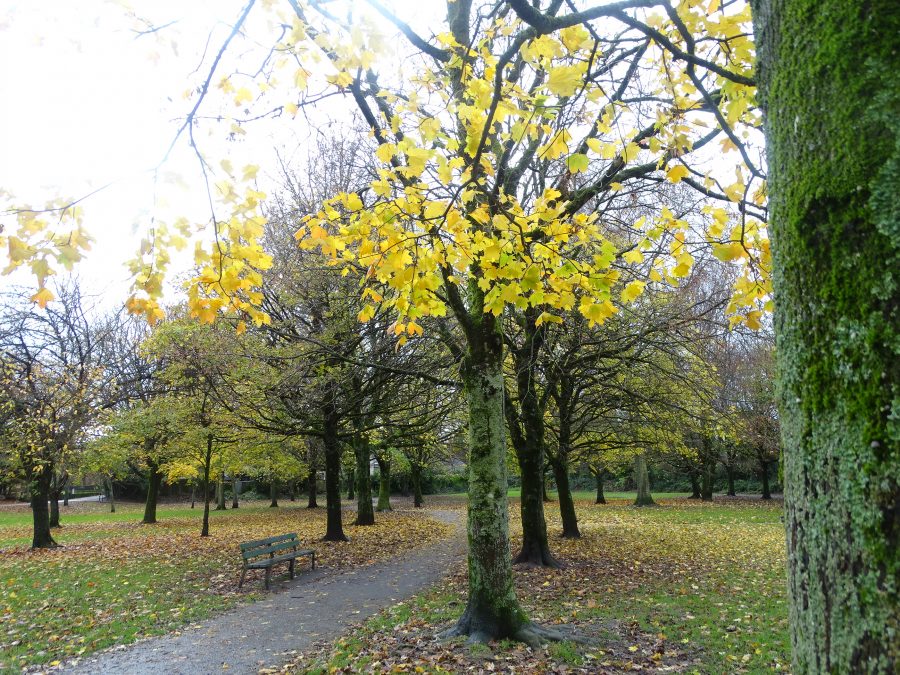
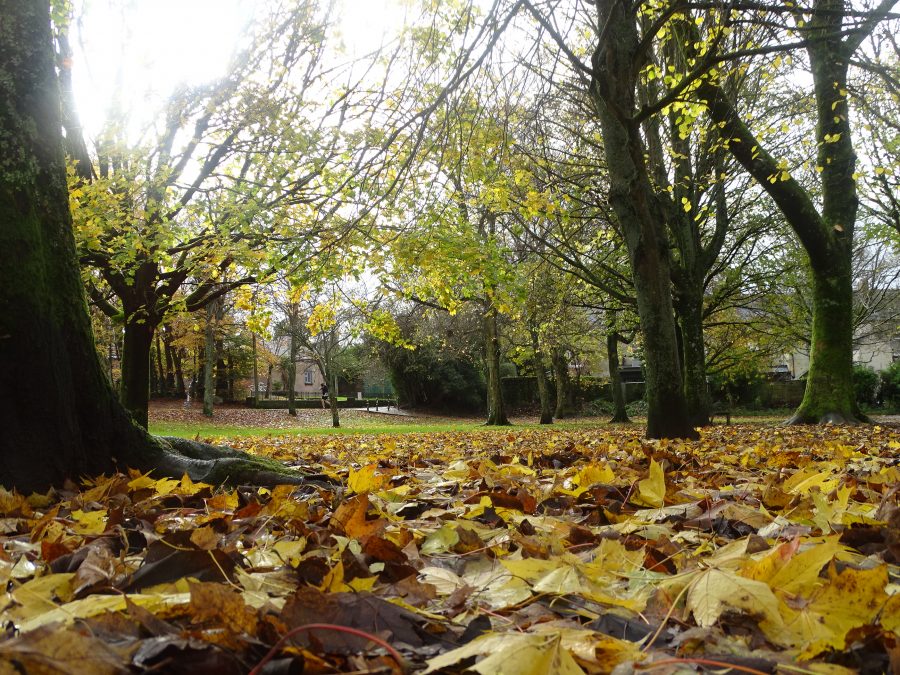
Japanese Gardens, Ballinlough, Cork, 16 November 2020 (picture: Cllr Kieran McCarthy)
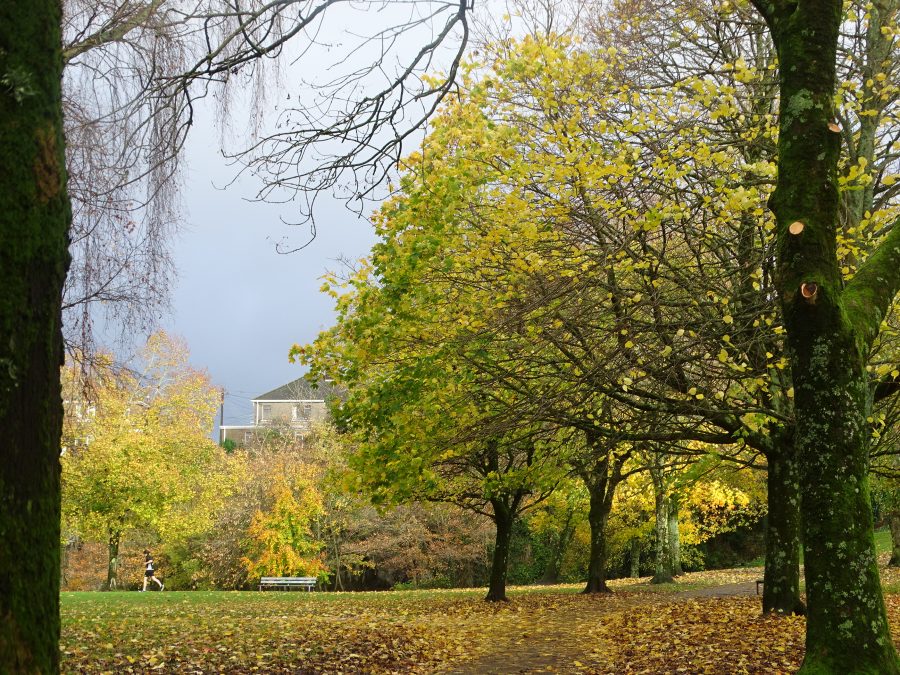
Japanese Gardens, Ballinlough, Cork, 16 November 2020 (picture: Cllr Kieran McCarthy)
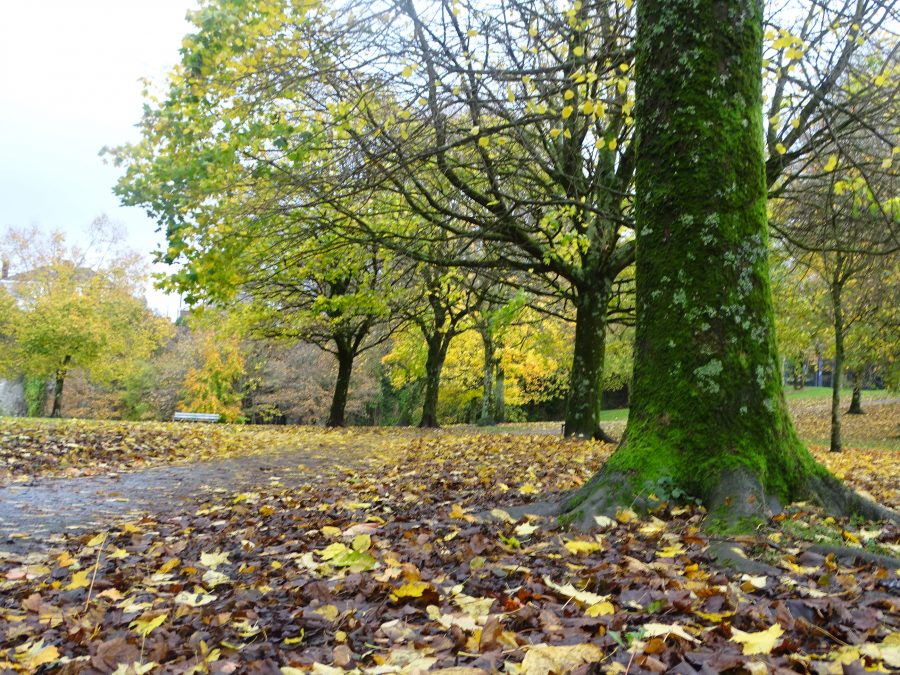
Japanese Gardens, Ballinlough, Cork, 16 November 2020 (picture: Cllr Kieran McCarthy)
Kieran’s Comments, Cork City Council Budget Night, 16 November 2020
Thanks Lord Mayor,
There is a great depth across the activities of the various directorates of the Council. I think all our Directors bring a level of openness, listening and hard work ethic, which is warranted and very welcome in this challenging times.
Despite the cuts, there is still much work being pursued as well as many opportunities being mined.
COVID may have drawn us into a worrying time about finances but has clearly showed the resilience of this organisation.
The turning around of the various government financial stimuli by this organisation in very short time frames has been impressive. Certainly 12 months ago no one was predicting aspects such as the pedestrianisation of 17 streets and urban spaces and the strong ramping up of work on walking and cycling in our city.
We must not let that momentum on improving the urban fabric and environment slow down but keep pressure on, and keep the collaborations with traders and citizens effective and positive.
Perhaps the only certainly that goes with next year is that there will undoubtedly be further financial challenges– but it is important that we advance on preparing part 8s, whether it is for housing or roads, and keep sending such plans to either government or the NTA for approval respectively.
We have three 3 government cabinet Ministers from Cork – and I strongly think that we need a Microsoft Teams meeting with Minister McGrath in DPER to run over this Council’s ambitions in the short term.
What I learned recently from intervening with Minister Ryan on his Teams meeting with us is that we should not assume as a Council that all of the Cabinet are au fait with the Council’s work.
Where the meeting with Minister Ryan was very positive and very open, I was still not content to hear the narrative of bungling Cork in with Galway, Waterford and Limerick as just a mere regional city instead of the country’s second city.
I would like to see a meeting with Minister McGrath set up as soon as possible and that we liase with Minster Ryan early in the new year.
It is important opportunities are seized to realise the stepping stones on the way to achieving our ambitions.
Certainly, if you empower a local authority such as Cork City Council, it will deliver in spades.
Thanks.
Douglas Community Park, Early November 2020
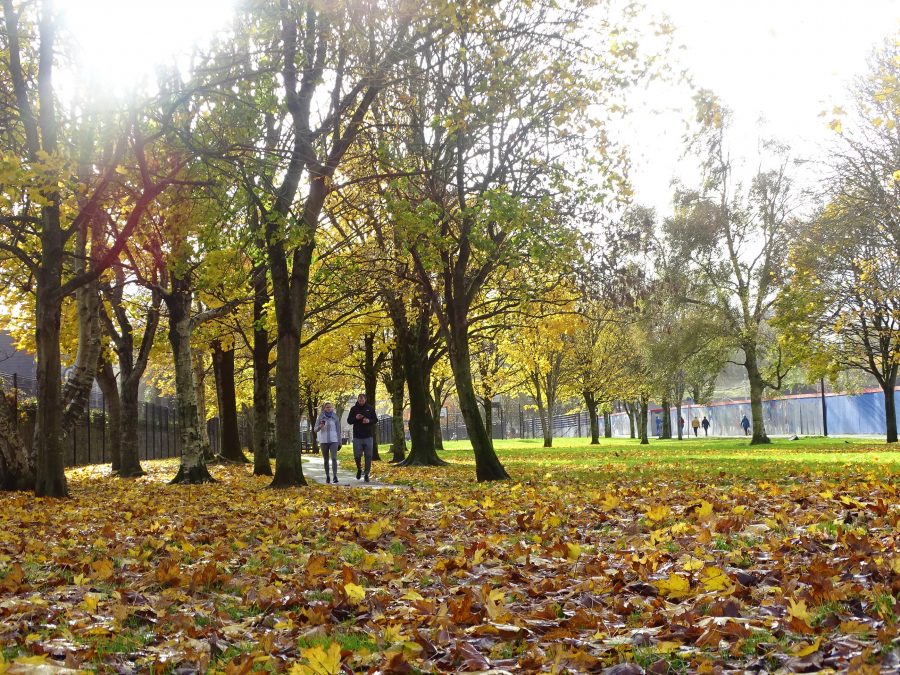

Douglas Community Park, early November 2020 (picture: Cllr Kieran McCarthy)
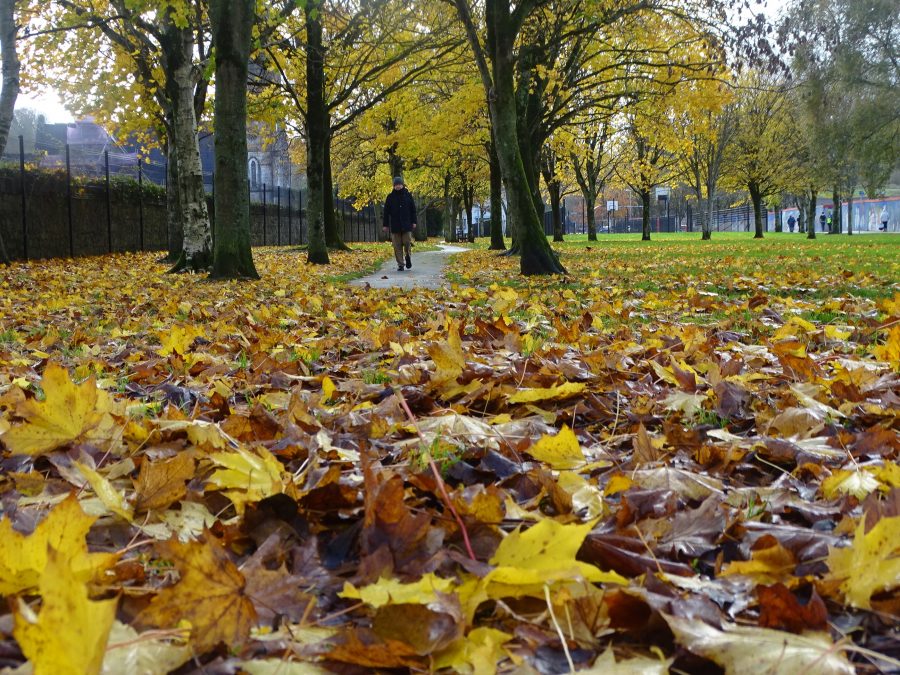
Douglas Community Park, early November 2020 (picture: Cllr Kieran McCarthy)
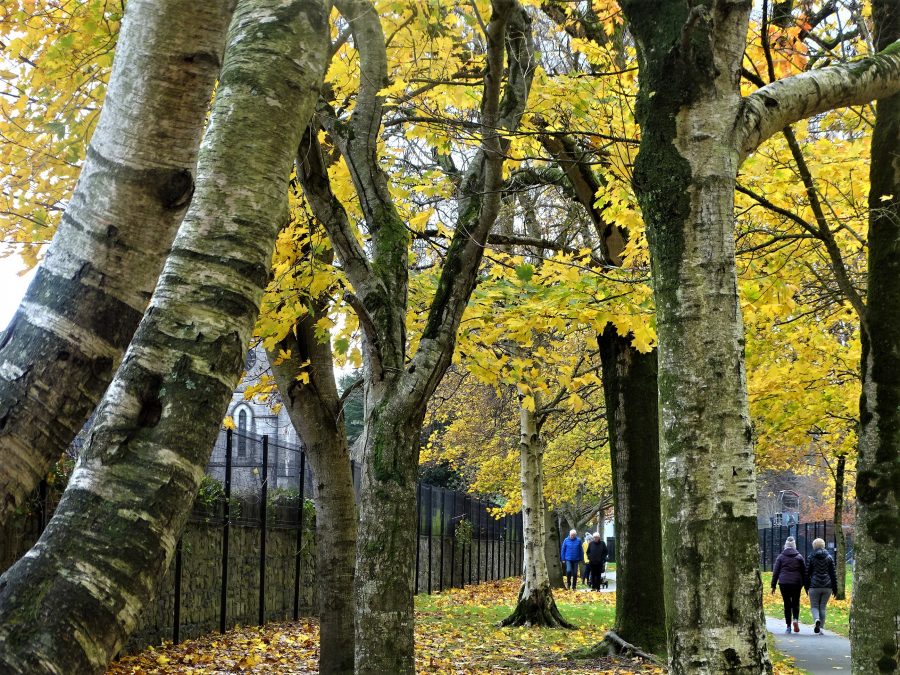
Douglas Community Park, early November 2020 (picture: Cllr Kieran McCarthy)
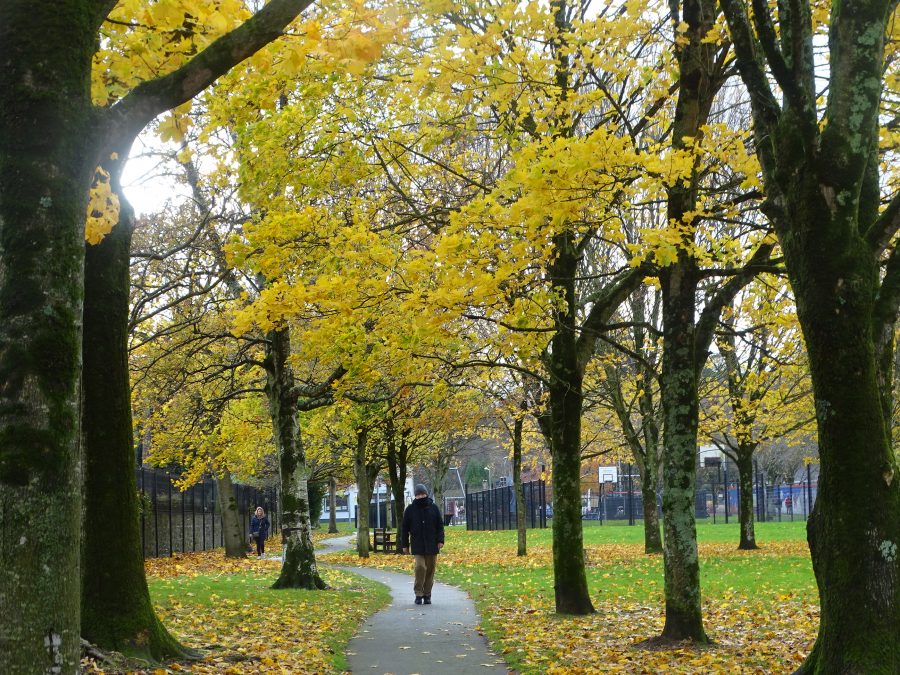
Douglas Community Park, early November 2020 (picture: Cllr Kieran McCarthy)
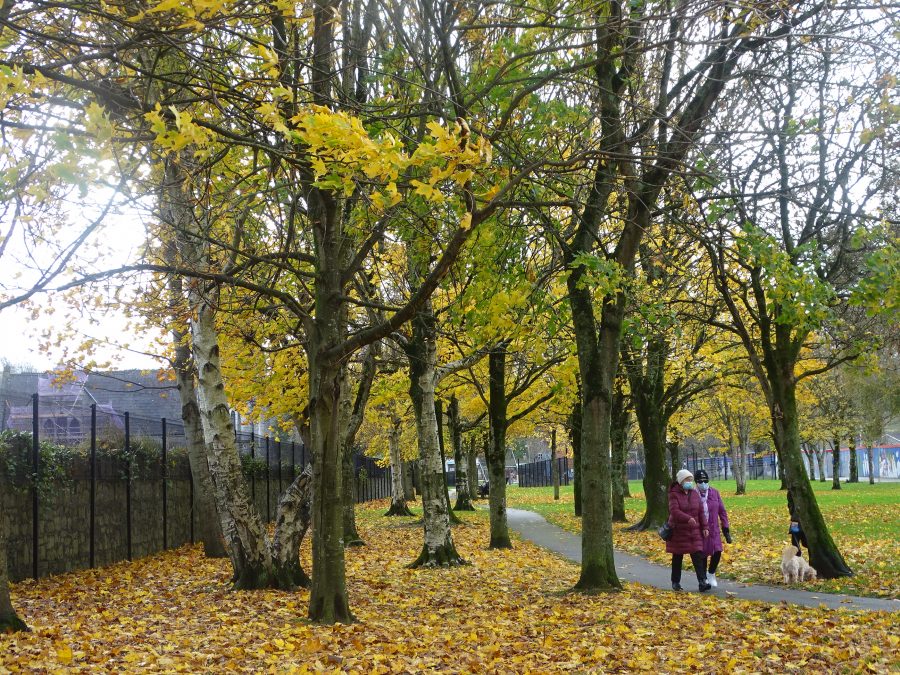
Douglas Community Park, early November 2020 (picture: Cllr Kieran McCarthy)
Cllr McCarthy: Unpicking Legal Titles Crucial for Future of the Lakelands Bar Site, 13 November 2020
Press Release:
Further calls from Independent Cllr Kieran McCarthy to compulsory purchase order the derelict Lakeland’s Bar site on Avenue De Rennes and its carpark have been rejected on the grounds of cost by property officials in City Hall at the recent South East Local Area Meeting. Cllr McCarthy noted; “this site is in a very poor condition and is an eyesore in the area; it is also the key in unlocking the regeneration of the area around it”.
“Cork City Council have acknowledged the poor condition of the Lakelands Bar site and the need for the removal of dereliction and to fill the giant potholes. To this end, a number of solutions have being considered by the Council in particular a full mapping of the landowners on this part of Avenue De Rennes. What has been revealed is a complex network of over a dozen owners of property in a small area. Such a network complicates the short term renewal of this part of Avenue de Rennes. What has become very apparent is the area needs a substantial packet of investment, probably from central government, so that the legal complexities can be began to unpicked, legal titles with liquidated owners gathered, and then new plans drawn up”.
“The look of the Lakelands bar building on the outside is atrocious. The adjacent car park also remains in limbo and is in dire need of resurfacing. The local people of Mahon deserve better than what is currently there. Such conditions completely jar against the very positive work of Mahon Community Centre and the Mahon Community Development Project and the community work of the local schools. On a positive note, the moving ahead of considering a public library in the adjacent secondary school is very welcome news”, concluded Cllr McCarthy.
Kieran’s Our City, Our Town, 12 November 2020
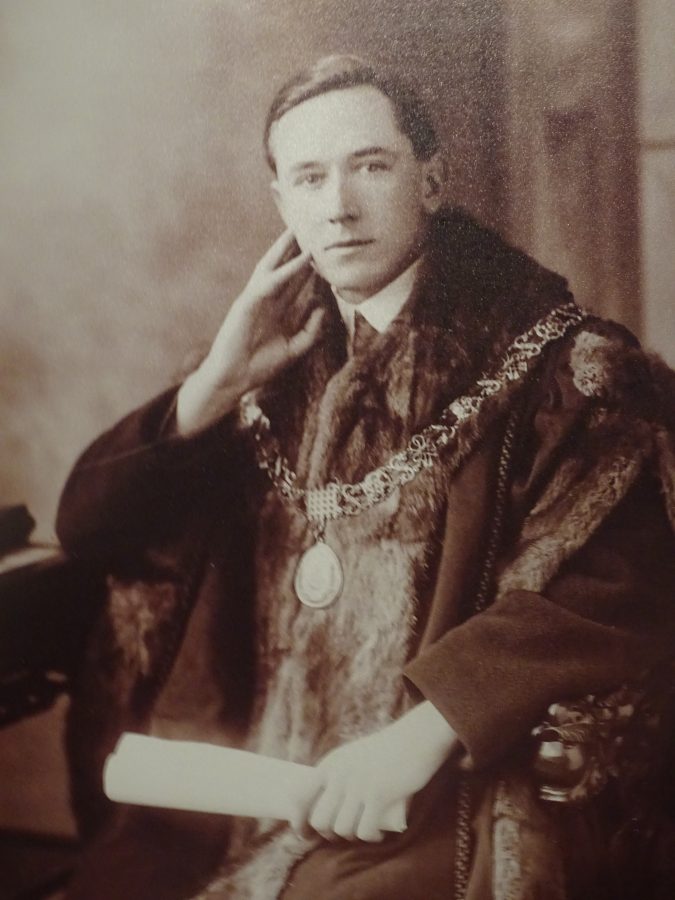
1074a. Lord Mayor of Cork Cllr Donal Óg O’Callaghan 1920 (picture: Cork City Museum)
Kieran’s Our City, Our Town Article,
Cork Independent, 12 November 2020
Remembering 1920: Arise Lord Mayor O’Callaghan
On 4 November 1920, a large public crowd attended at City Hall’s Council Chamber. They were present to witness the special meeting of the Council of Cork Corporation, which was being held with the purpose of electing a successor to Lord Mayor Terence MacSwiney. Councillor Donal Óg O’Callaghan, who acted in his capacity of Deputy Lord Mayor since the arrest of Terence, was unanimously elected to the vacancy.
On the night of Donal’s election, with 34 members of the 56 councilors present due to the ongoing war of Independence, Alderman Professor Stockley was moved to the chair. Fr Dominic occupied a seat alongside the Mayoral chair. On the motion of Cllr Micheál O’Cuill seconded by Alderman Edmond Coughlan, both of whom spoke in Irish, Donal was unanimously elected to the position of Lord Mayor. Some months previously on 10 March 1920 Sinn Féin‘s Donal Óg O’Callaghan emerged as a victor in the first bye-election after the January 1920 local elections for Cork Corporation. Donal was a fluent Irish speaker and was the youngest representative to have ever held the high and important office. He also occupied the Chairmanship of the Cork County Council.
Donal, who was received with applause, then signed his declaration of office and was invested with the Mayoral chain. First speaking in Irish and afterwards in English the new Lord Mayor spoke about his predecessors and the ongoing war with the British Government, and the Republican position of not backing down in their aspirations for Independence; “Our position was that one after another two Republicans who held thechair had been murdered by the British government. That same murder gang, who called themselves a Government, while the remains of Terence MacSwiney still lay over the ground, and while it was still possible for that gang to heap insult on the remains did so, and even then the same gang spread forth its tentacle to seize the next man. However, my position was, and we are are setting it forth this night as clearly and distinctly and glaringly as it could be possibly set forth, that we absolutely refuse to be tyrannised…our demand in the country has been made, and we are not going to flinch no matter what the result or cost might be”.
Following the Lord Mayor’s speech Alderman Tadgh Barry raised the execution of 18-year-old Kevin Barry from Dublin on 1 November 1920, who became the first Republican to be executed since 1916. Kevin Barry was an IRA section Commander who partook in various raids around Dublin city. On 20 September 1920, he participated in a raid where a street gun battle ensued, and three British soldiers were killed. Hiding under a tree Kevin was discovered and brought to Mountjoy Prison, where he refused to reveal the identity of his comrades. New legislation in 1920 had given military authorities greater powers to quell increasing IRA activity. Barry had privately admitted killing one soldier in an ambush and was tried as a soldier under the legislation. He was hanged for his crime. There was vast public outrage at the execution of a young man.
Alderman Tadgh Barry proposed a resolution: “That we the Corporation of Cork place on record our condemnation of the latest abominable crime, perpetrated by the British Government in Ireland in the murder, by hanging of young Kevin Barry, and offer our respectful sympathy to his patriot mother in her sorrow, and congratulations on her support of his refusal to purchase his life by betraying his comrades to his torturer?”. Tadgh’s motion was forwarded to the next meeting of the Council.
However, the deaths of young IRA volunteers continued. On 10 November 1920, 22-year-old Christy Lucey was killed at Túirín Dubh, Ballingeary, He took an active part in his local IRA company and on one evening he slept in the rough on a hillside. As descended the hillside the following morning, Christy was cornered by a group of Auxiliaries of C Company from Macroom and shot dead as he attempted to escape. The Auxiliary who shot him was himself soon executed by the IRA. When the Black and Tan individual returned to Macroom that evening, he entered the Market Bar and began to celebrate but was fatally shot.
Formerly a resident of Pembroke Street in Cork City, Christy was a former member of B Company of the First Battalion (Cork No. 1 Brigade) in Cork city. He was given an imposing funeral in the city and was buried in the Republican Plot in St Finbarr’s Cemetery. Such an event attracted much public interest including intimidating attention from British military forces in Cork city. As the funeral cortege commenced, an armoured car, in convoy with two lorries full of armed soldiers, arrived near the church. The officer in charge served a notice on Rev. J F Murphy, which denoted that only one hundred people would be allowed to take part in the cortege. As the cortege left the South Chapel and emerged into George’s Quay, an armoured car took up a position in the procession immediately before the carriages of the mourners. The coffin was draped in the republican colours and was carried on the shoulders of 4 Volunteers. On route to the cemetery, the paths along the route were filled with spectators.
A day after Christopher Lucey’s murder on 11 November 1920, Lord Mayor O’Callaghan and Father O’Leary, CC, of the South Chapel, received messages from Arthur Griffith, declaring that the Cork Hunger strike was to be ceased at Cork Gaol. To Griffith the prisoners had “sufficiently proved their devotion and fidelity, and that they should now, as they were prepared to die for Ireland, prepare again to live for her”. A small quantity of nourishment has been taken by the hunger strikers and it was hoped that they would recover.
A new book on Lord Mayor Donal Óg O’Callaghan’s life and times by UCC’s Dr Aodh Quinlivan and entitled Forgotten Lord Mayor, Donal Óg O’Callaghan, 1920-1924, will be published by Cork City Council this month.
Captions:
1074a. Lord Mayor of Cork Cllr Donal Óg O’Callaghan 1920 (picture: Cork City Museum).
1074b. Christopher Lucey as a Cork Fianna member in 1916 (picture: Cork City Library).
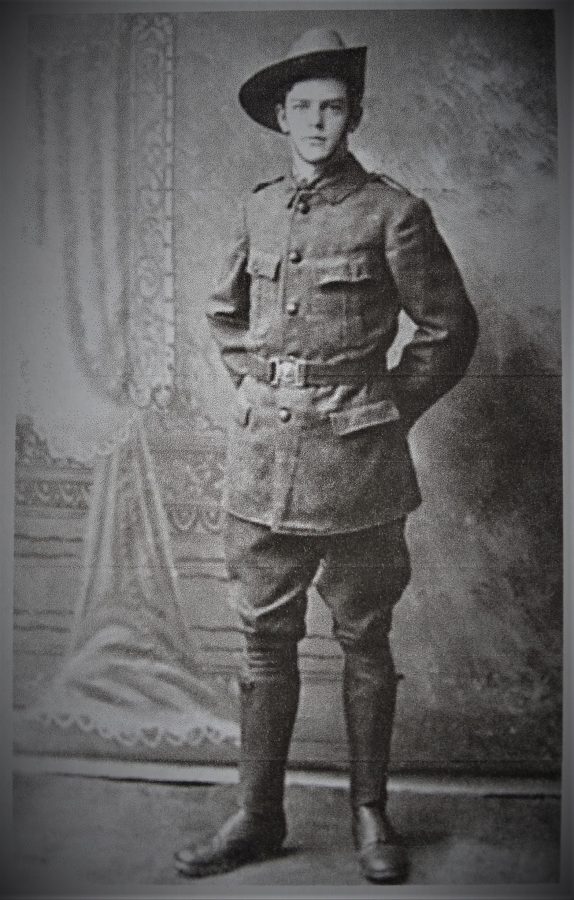
1074b. Christopher Lucey as a Cork Fianna member in 1916 (picture: Cork City Library).
Plan for statues of revolutionary figures in Cork vetoed for not including any women, 10 November 2020
10 November 2020, “The motion was met with some resistance. Independent councillor Kieran McCarthy told the meeting he couldn’t support it. I just couldn’t support four male statues on Pana,” he said. I just think that the female context is completely forgotten from that time, the Cumann na mBan and all these other elements. There are busts of Mac Curtain, MacSwiney and Collins around the city, and there are places and streets named after them, he added”. Plan for statues of revolutionary figures in Cork vetoed for not including any women, https://www.irishexaminer.com/news/munster/arid-40079303.html

City Hall gives green light for new pedestrian access to Cork’s Tramore Valley Park, 9 November 2020
9 November 2020, Independent councillor Kieran McCarthy said it was welcome that the report “reflected upon the enthusiasm expressed in submissions and the issues raised by the submissions”. “Funding now needs to be secured for this Part 8 to progress past this report,” he continued, City Hall gives green light for new pedestrian access to Cork’s Tramore Valley Park, https://www.echolive.ie/corknews/City-Hall-gives-green-light-for-new-pedestrian-access-to-Corks-Tramore-Valley-Park-6b782f19-928d-4872-8f1b-e25cc230fa64-ds
Kieran’s Cork City Council Speech, 9 November 2020:
This part 8 is another very important addition to the story of Tramore Valley Park. I am happy that the Park 8 report has reflected upon the enthusiasm expressed in submissions and the issues raised by the submissions.
It is very important that Half-Moon Lane does not become an additional car park for the Park but a value added pedestrian and cycling access point. Funding now needs to be secured for this part 8 report to progress past this report.
Tramore park is just in its first phase of development and this public consultation on a Half Moon Lane opening is about ensuring that family, community and park life all remains at the heart of the southern suburbs.
Phases two and three of the park, such as a bridge crossing from Grange, are the next elements to chase now for the future and to engage the public on their perspectives.
It is important to acknowledge at public meetings such as this how far the site has come – Over the ten years, the old landfill site of what is now Tramore Valley Park has undergone a €40m decontamination and remediation process – part of which saw the site capped and landscaped, internal roads and walkways constructed, new sports pitches put down, a BMX track developed, and a large multi-use event space created”.
During the last few months in particular Tramore Valley Park was a second home to many people. Great credit is due to the park wardens onsite who are always friendly, as are the recycling staff. Tramore Valley Park has etched itself a jewel in the growing necklace of parks in the city, which are highly significant to the mental and physical health of citizens.